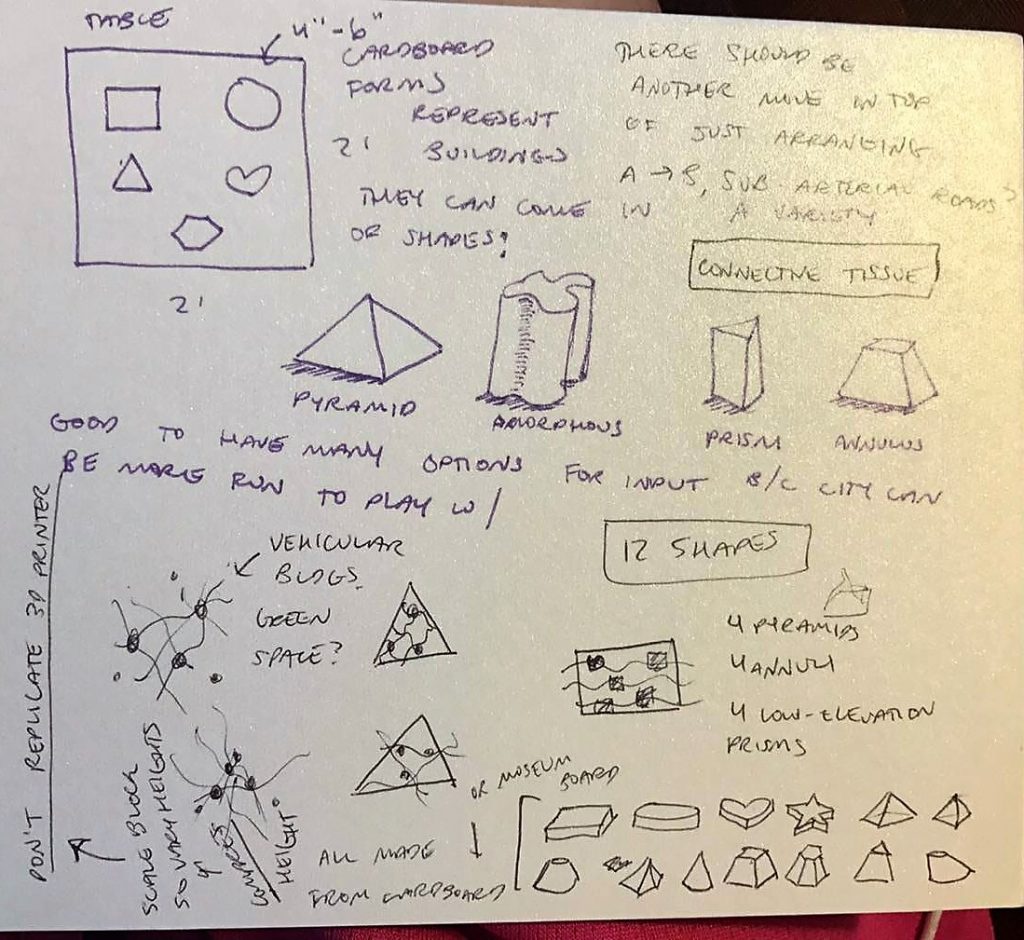1. Hybrid Skill Workflow Diagram
2.Annotated Drawings
Input:
Transformation:
Process:
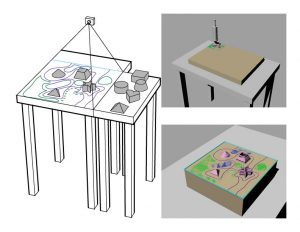
Left: Input, in which cardboard forms that represent buildings are arranged on a 2′ x 2′ table and whiteboard surface under a Kinect. Green spaces (green), roads (purple), and bodies of water (blue) are drawn in with markers. A boundary (cyan) for the cake is also drawn to indicate where to cut. The Kinect tracks the RGB values of the pathways and records the depth of each object in relation to the table.
Upper right: Process, in which an ABB robot uses a caulk gun with different tips and colors of icing to pipe the different recorded features onto a large 18″ x 24″ sheet cake using the data it received from the Kinect. The data is now at 1/4 the size of the initial input setup as it is piped onto the cake. Icing materials are carefully chosen to ensure that the icing stands up when stacked and is solid enough to withstand minimal movement.
Lower right: Output, in which the finished cake is cut from the larger sheet. The process is repeated for different setups which turns out more cakes of different shapes and sizes.


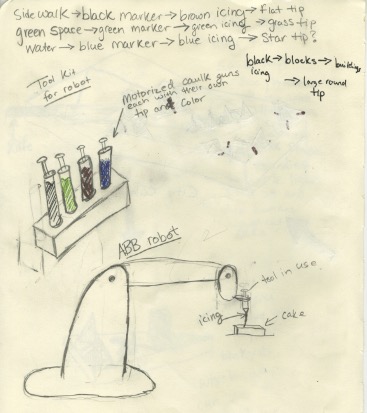
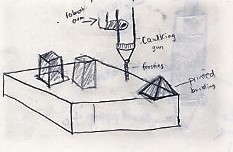
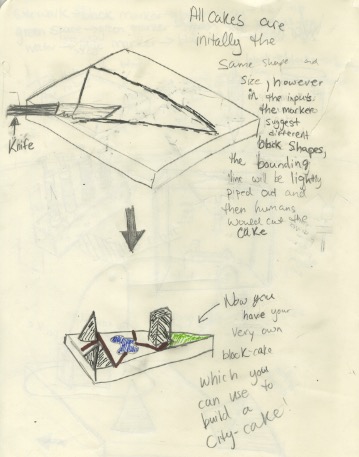
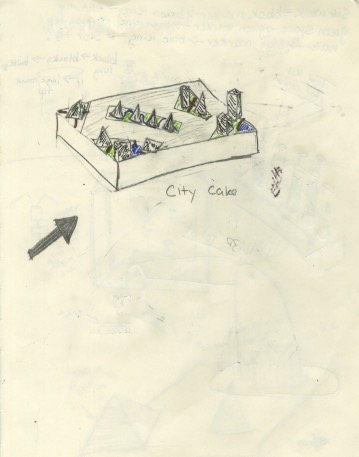
3. Written Description
Remember playing with blocks as a child to make buildings and cities? Now imagine if those cities were actually made of cake. Our motivation with this project is to introduce children to urban planning concepts in a fun, interesting, and edible way, while valuing the deep artistry the goes into cake decorating.
First a child defines the space by using specially shaped markers. A child arranges blocks to make buildings on a table as if they are city buildings, arranging them as if they were one block of a city. Sidewalks, green spaces, and water elements can be drawn in colored dry erase markers. A depth capture camera looking down from overhead captures the arrangement, shape, and color of the features. An ABB then pipes the features using conventional cake piping techniques onto a single cake, in the process reducing its dimension by a factor of ~4–6. Once there are enough blocks created in this way, they can themselves be arranged in the same space to form a cake city consisting of cake blocks.

